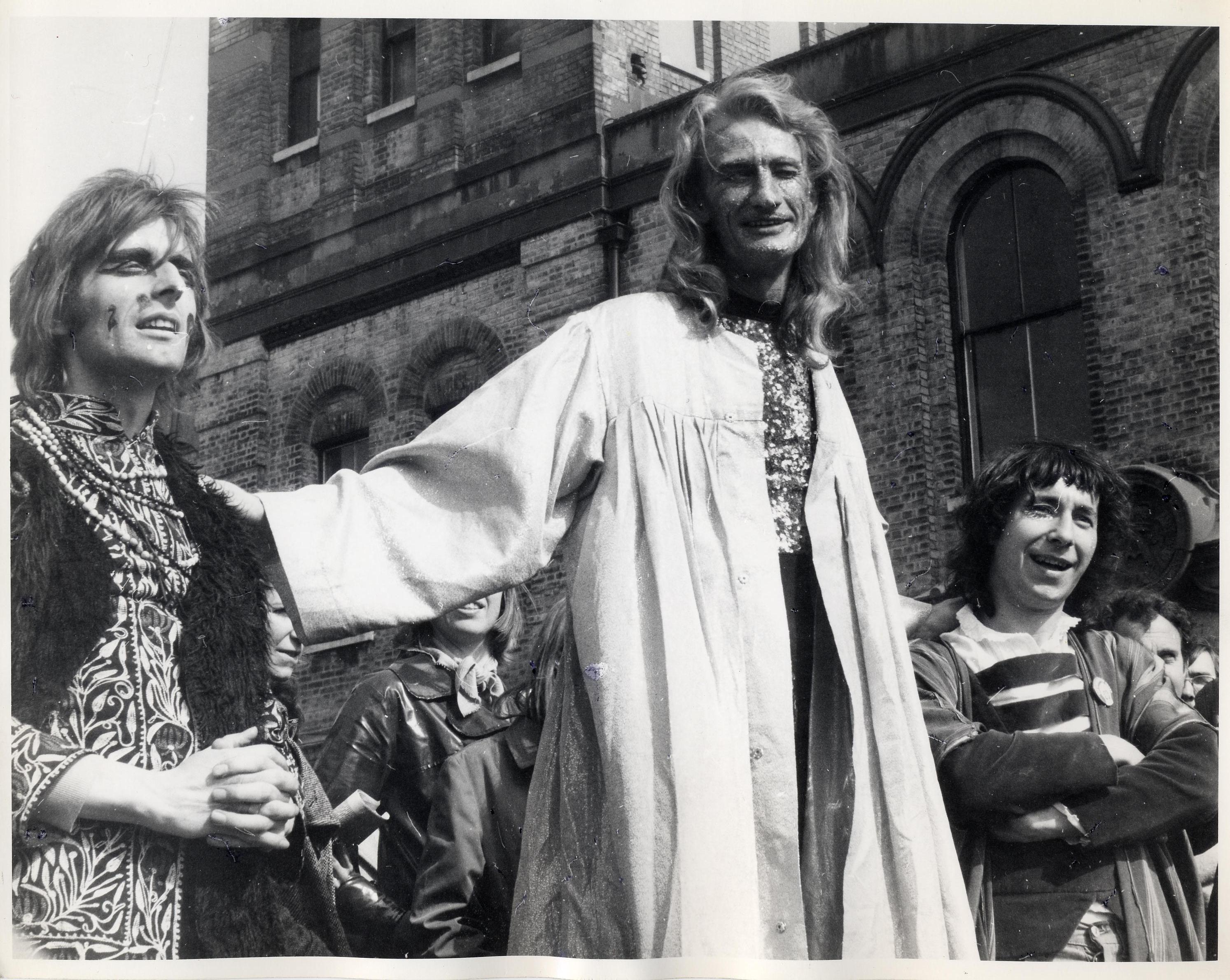Gay liberation movement
Enlarge text Shrink text- Work cat.: 2001027051: Bull, C. Come out fighting, 2001.
- Hunt, R.J. Historical dict. of the gay liberation movement, 1999:pp. 14-16 (gay and lesbian rights movement; gay and lesbian liberation movement; gay and lesbian movement) p. 18 (homosexual rights movement)
- Ridinger, R.B.M. The gay and lesbian movement, 1996:p. xii ("homophile" movement became the "gay liberation movement" after the Stonewall Riots)
- Adam, B.D. The rise of a gay and lesbian movement, c1995.
- Encyc. of homosexuality, 1990(Movement, Homosexual. The homosexual movement is a general designation for organized political striving to end the legal and social intolerance of homosexuality; homophile movement)
- Reader's guide to lesbian and gay studies, 2000:p. 250 (homosexual rights movement) p. 462 (gay and lesbian movements; gay movement)
The gay liberation movement was a social and political movement of the late 1960s through the mid-1980s in the Western world, that urged lesbians and gay men to engage in radical direct action, and to counter societal shame with gay pride. In the feminist spirit of the personal being political, the most basic form of activism was an emphasis on coming out to family, friends, and colleagues, and living life as an openly lesbian or gay person. The Stonewall Inn in the gay village of Greenwich Village, Manhattan, New York City, was the site of the June 1969 Stonewall riots, and became the cradle of the modern LGBT rights movement, and the subsequent gay liberation movement. Early in the seventies, annual political marches through major cities, (usually held in June, originally to commemorate the yearly anniversary of the events at Stonewall) were still known as "Gay Liberation" marches. Not until later in the seventies (in urban gay centers) and well into the eighties (in smaller communities) did the marches begin to be called "gay pride parades". The movement involved the lesbian and gay communities in North America, South America, Western Europe, Australia and New Zealand. Gay liberation is also known for its links to the counterculture of the time (e.g. groups like the Radical Faeries) and for some gay liberationists' intent to transform or abolish fundamental institutions of society such as gender and the nuclear family, regardless of whether they had anything to do with the actual principles of gay rights. For some offsets of movement, the politics were radical, anti-racist, and anti-capitalist. In order to achieve such goals, consciousness raising and direct action were employed. While HIV/AIDS activism and awareness (in groups such as ACT UP) radicalized a new wave of lesbians and gay men in the 1980s, and radical groups have continued to exist ever since, by the early 1990s the radicalism of gay liberation was eclipsed in the mainstream by newly-out, pro-assimilationist gay men and women who stressed civil rights and mainstream politics. The term gay liberation sometimes refers to the broader movement to end social and legal oppression against LGBT people. Sometimes the term gay liberation movement is even used synonymously or interchangeably with the gay rights movement. The Christopher Street Liberation Day Committee was formed in New York City to commemorate the first anniversary of the June 1969 Stonewall riots, the beginning of the international tradition of a late-June event to celebrate gay pride. The annual gay pride festivals in Berlin, Cologne, and other German cities are known as Christopher Street Days or "CSD"s.
Read more on Wikipedia >
 Topic
Topic





